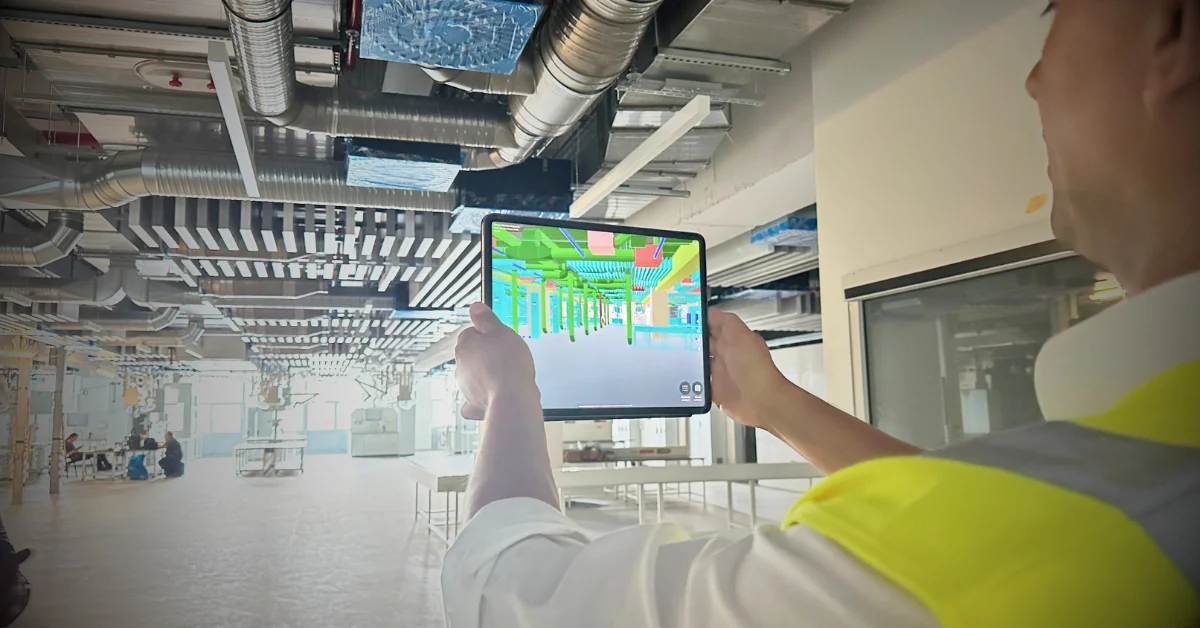How GAMMA AR Maximizes Jobsite Efficiency

Table of Contents
Share this post
The global construction market has experienced remarkable growth in recent years, expanding from $10.7 trillion in 2017 to an impressive $15.46 trillion in 2023 —a solid 35.7% increase.
This surge highlights the industry’s strength and adaptability, even in the face of economic conditions.
But even with all this growth, some long-standing problems haven’t gone away.
Nearly 98% of today’s projects are suffering from cost overruns, each one averaging around 80% above initial estimates.
It’s clear that something has to change, and fast.
Not all of the traditional methods are outdated, but many are struggling to keep up with the fast-paced demands of today’s market.
With competition heating up and profit margins tighter, more companies are on the lookout for smarter, innovative solutions.
The construction industry is shifting fast, and tech is stepping in to tackle some of the biggest headaches.
According to the 2022 AEC Industry Outlook Survey by OpenAsset, nearly 74% of construction companies that took part are gearing up to bring in new technologies to overcome these key challenges.
A study by USG Corporation and the U.S. Chamber of Commerce found that more than 70% of contractors surveyed are convinced that advanced tech solutions can boost productivity (78%), enhance scheduling (75%), and improve safety (79%).
One such solution is augmented reality, also called AR.
Let’s take a closer look and see how and why AR can deliver an edge to companies that adopt it.
Why Augmented Reality is Changing the Construction Industry
Augmented reality (AR) layers digital data—think images, stats, and animations—right on top of the real world as we’re looking at it, enhancing how we see and interact with our surroundings.
In construction, using a mobile device like a smartphone or tablet, AR can project detailed architectural drawings in the form of a Building Information Modeling (BIM) model directly onto a physical site.
This provides a reliable visual and interactive guide to building according to plan.
In a nutshell, here’s what makes AR a great fit for construction:
Enhanced Visualization
AR transforms even the most complex construction plans into clear, intuitive visuals for construction teams to carry with them as they walk through a site, minimizing the chances of costly errors and misunderstandings.
Seamless syncing
Whether connected in real-time or working offline, users can easily sync their devices anytime. This way, everyone stays aligned with the latest model version and shared data, maintaining a single source of truth for all project teams.
Increased Alignment
AR enhances the alignment between the physical construction and the digital design. This results in finished work that more accurately reflects the 3D BIM model and plans.
Improved Collaboration
AR bridges any communications gaps between contractors, architects, engineers, project managers, and site workers, aligning all parties with the project’s goals and milestones.
The versatility of AR technology makes it an invaluable tool on the job site.
Even more so with solutions running on portable devices already in the hands of most workers.
This eliminates the need for specialized equipment like expensive VR/AR headsets and goggles.
Depending on the AR solution, it can easily scale across projects of various sizes, allowing construction professionals to leverage its benefits without high costs or steep learning curves.
In an industry facing a shortage of skilled workers, these tools enable less-experienced workers to quickly get up to speed, due to their intuitive, non-technical interface.
This ensures that teams can maintain efficiency and alignment without having to rely solely on highly specialized expertise.
AR is already reshaping the construction industry, and one of the leading solutions driving this change is GAMMA AR.
